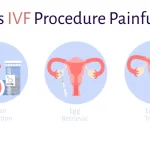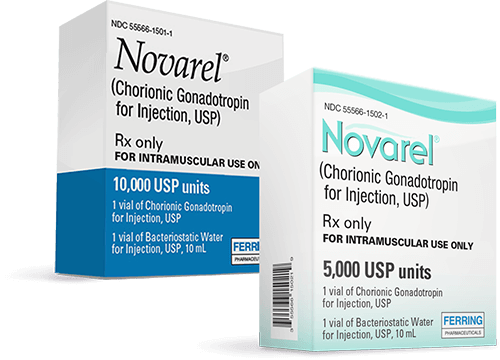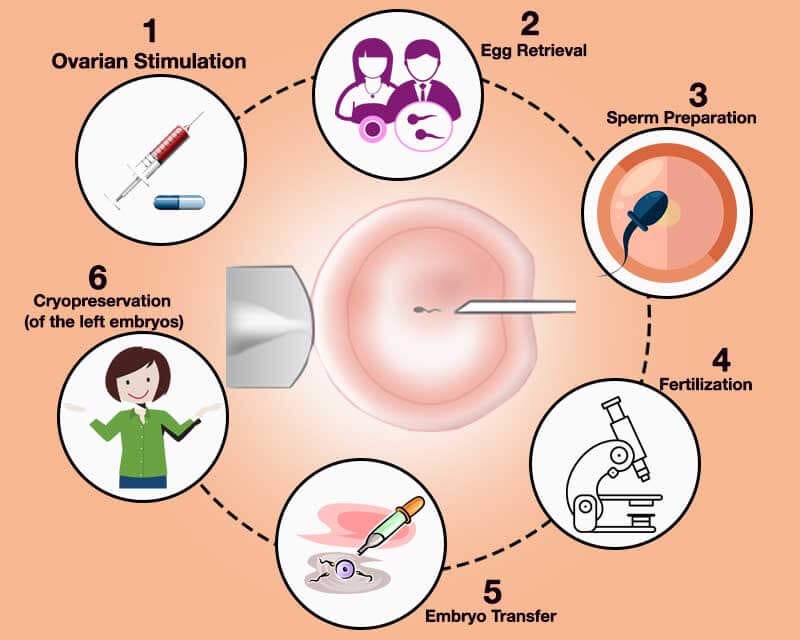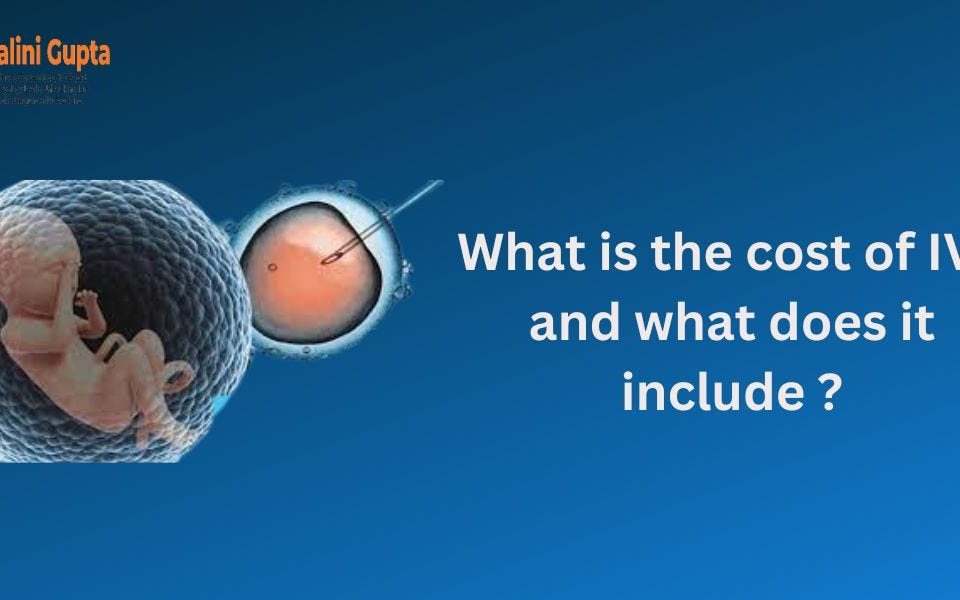
Can You Choose Gender with IVF?
April 12, 2025
Is IVF Painful? Your Complete Guide to Understanding the Process
April 12, 2025How Much Is IVF Treatment? Your Complete Guide to Costs, Options, and What to Expect
In vitro fertilization (IVF) is a life-changing option for many people dreaming of starting a family. But if you’re considering it, one big question probably keeps popping up: How much is IVF treatment going to cost me? The answer isn’t simple—it depends on where you live, what your insurance covers, and the specifics of your journey. Don’t worry, though. This guide breaks it all down in a way that’s easy to digest, with real numbers, practical tips, and some fresh insights you won’t find everywhere else. Whether you’re just curious or ready to take the plunge, here’s everything you need to know about IVF costs in 2025.
What’s the Average Cost of IVF in the U.S.?
IVF isn’t cheap, but knowing the baseline can help you plan. In the United States, as of April 2025, a single IVF cycle typically ranges from $12,000 to $25,000. That’s a big window, right? The variation comes from factors like your location, the clinic you choose, and what’s included in the package. For example, a clinic in New York City might charge closer to $20,000-$25,000, while one in a smaller town could be nearer to $12,000-$15,000.
Here’s a quick breakdown of what that price usually covers:
- Ovarian stimulation medications: $3,000-$5,000
- Egg retrieval and lab work: $5,000-$8,000
- Embryo transfer: $3,000-$5,000
- Monitoring (ultrasounds, blood tests): $1,500-$3,000
These are just the basics. If you need extras like genetic testing or donor eggs, the bill climbs higher. Posts on X in early 2025 pegged the average at around $17,000-$25,000, aligning with data from fertility organizations like the American Society for Reproductive Medicine (ASRM). But here’s the kicker: most people don’t succeed on their first try. Studies show the average couple needs 2-3 cycles, pushing the total cost to $30,000-$75,000 or more.
Why Costs Vary So Much
Think of IVF like buying a car. A base model gets you from A to B, but add leather seats, a sunroof, or a turbo engine, and the price jumps. IVF is similar. The “base model” is a standard cycle, but your situation might call for upgrades:
- Age: Women over 35 often need more medication or cycles, increasing costs.
- Clinic reputation: Top-tier centers with high success rates charge more.
- Location: Urban areas tend to be pricier than rural ones.
For instance, a 2024 report from FertilityIQ found that IVF in California averaged $22,000 per cycle, while in Texas, it was closer to $16,000. Your wallet feels the difference.
Hidden Costs You Might Not Expect
The sticker price is just the start. There are sneaky extras that can catch you off guard if you’re not prepared. Here’s what to watch out for:
Medications: The Wild Card
Fertility drugs are a huge chunk of the bill, and their cost can swing wildly. A basic round of meds might be $3,000, but if your body doesn’t respond well, you could spend $7,000 or more. Some clinics offer “medication packages,” but they’re not always a bargain—check the fine print.
Freezing Embryos
Got extra embryos? Freezing them for later costs $1,000-$2,000 upfront, plus $300-$600 per year for storage. It’s like renting a tiny fridge for your future family.
Genetic Testing
Want to screen embryos for health issues? Preimplantation genetic testing (PGT) adds $3,000-$6,000 per cycle. It’s optional but popular, especially for older parents or those with genetic concerns.
Travel and Time Off
If your clinic’s far away, factor in gas, flights, or hotel stays. Plus, IVF appointments eat up time—think 5-10 visits per cycle. Missing work could mean lost wages, especially if your job doesn’t offer paid leave.
Emotional Support
Therapy or support groups aren’t usually included, but they’re a lifeline for many. A session with a counselor might run $100-$200, and trust me, the emotional rollercoaster of IVF can make it worth every penny.
Quick Quiz: What’s Your Biggest Hidden Cost Worry?
Take a second to think—what’s the extra expense you’re most nervous about?
- A) Medications
- B) Freezing embryos
- C) Travel
- D) Something else
Drop your answer in your head (or share it with a friend!). It’ll help you focus on what to budget for.
Does Insurance Cover IVF?
Here’s where things get tricky. In the U.S., insurance coverage for IVF is a patchwork mess. As of 2025, only 21 states have laws mandating some form of fertility treatment coverage, and even then, IVF isn’t always included. If you’re lucky, your plan might cover part of the cost—say, $5,000-$10,000 per cycle—but full coverage is rare.
How to Check Your Coverage
- Call your insurer: Ask specifically about IVF, not just “fertility treatments.”
- Look for loopholes: Some plans cover diagnostics (like testing) but not the procedure itself.
- Ask about caps: Many policies limit coverage to a dollar amount or number of cycles.
A 2023 Pew Research survey found that 70% of women who’ve used fertility services had some private insurance help, but out-of-pocket costs still averaged $10,000+. If you’re uninsured, you’re looking at the full tab.
States with IVF Mandates
| State | Coverage Details | Notes |
|---|---|---|
| New York | Up to 3 cycles covered | Large employers only |
| California | Diagnostics covered, IVF optional | Varies by plan |
| Texas | No mandate | Out-of-pocket common |
| Massachusetts | Comprehensive coverage | Gold standard for IVF |
If you’re in a non-mandate state, don’t lose hope—some employers offer fertility benefits as a perk. Check with HR!
Affordable IVF Options: Can You Cut Costs?
IVF’s price tag can feel overwhelming, but there are ways to make it more manageable. Here are some practical ideas to explore:
Low-Cost Clinics
Some clinics offer “mini-IVF” or “natural IVF,” which use fewer drugs and simpler protocols. Costs can drop to $5,000-$10,000 per cycle, though success rates might be lower. A 2022 study in Reproductive Sciences found mini-IVF success rates hovered around 15-20% per cycle for women under 35, compared to 40% for standard IVF.
Financing and Loans
Many clinics partner with lenders to offer payment plans. Interest rates vary (5-15%), but it spreads the cost over months or years. For example, a $20,000 cycle could become $500/month for 4 years. Just watch out for high fees!
Grants and Discounts
Nonprofits like BabyQuest or the Tinina Q. Cade Foundation offer IVF grants—sometimes up to $10,000. Clinics might also discount multiple cycles (e.g., pay for 2, get a 3rd half-off). Apply early—these fill up fast.
Clinical Trials
Some research centers need participants for IVF studies. In exchange, you might get free or discounted treatment. Check ClinicalTrials.gov for options near you, but read the risks carefully.
✔️ Do This, ❌ Don’t Do That
- ✔️ Shop around for clinics—prices vary even in the same city.
- ❌ Don’t assume the cheapest option is best; check success rates.
- ✔️ Ask about refund programs if IVF fails.
- ❌ Don’t skip meds to save money—it could tank your chances.
What About Donor Eggs or Surrogacy?
If standard IVF isn’t an option, donor eggs or surrogacy might be on your radar. These come with their own costs—and they’re not small.
Donor Eggs
Using donor eggs boosts success rates (up to 50-60% per cycle), but it’s pricey. Expect $20,000-$45,000 per cycle, including the donor fee ($5,000-$15,000), agency costs, and IVF itself. X posts in 2025 highlighted this as a major barrier for many.
Surrogacy
Surrogacy is the big-ticket item: $50,000-$200,000 total. That covers the surrogate’s compensation ($30,000-$50,000), legal fees, and medical expenses. It’s a huge investment, but for some, it’s the only path to parenthood.
Real Story: Sarah’s Journey
Sarah, a 38-year-old from Ohio, shared her experience on a fertility forum. After two failed IVF cycles ($32,000 total), she switched to donor eggs. It cost $28,000, but she welcomed twins in 2024. “It was a stretch financially,” she said, “but seeing their faces made every dollar worth it.”
IVF Success Rates: Are You Getting Your Money’s Worth?
Cost isn’t just about dollars—it’s about results. The CDC tracks IVF success rates, and here’s what they show for 2023 (the latest full data):
- Under 35: 40-50% live birth rate per cycle
- 35-37: 30-40%
- 38-40: 20-30%
- Over 40: 5-15%
These are averages. Your odds depend on your health, the clinic’s expertise, and a bit of luck. A 2024 HFEA report noted that frozen embryo transfers (FET) are gaining ground, with success rates now matching fresh transfers—good news if you’re freezing extras.
Boosting Your Chances Without Breaking the Bank
- Lifestyle tweaks: Quit smoking, cut caffeine, and aim for a BMI of 19-30. Studies link these to a 10-15% success boost.
- Timing: Start before 35 if possible—each year after lowers your odds.
- Clinic choice: Pick one with a proven track record, even if it’s a bit pricier.
The Global Picture: IVF Costs Around the World
IVF isn’t just a U.S. story. Costs vary wildly worldwide, and some people travel abroad to save money. Here’s a snapshot:
| Country | Cost per Cycle | Notes |
|---|---|---|
| UK | $6,000-$10,000 | NHS may cover if eligible |
| India | $3,000-$5,000 | Popular for medical tourism |
| Spain | $5,000-$8,000 | High success rates |
| Australia | $8,000-$12,000 | Partial government rebates |
Traveling for IVF—aka “fertility tourism”—can slash costs, but add $1,000-$5,000 for flights and lodging. Plus, you’ll need to vet overseas clinics carefully.
New Trends in IVF Costs for 2025
IVF’s evolving, and 2025 brings fresh twists. Google Trends shows spiking interest in “affordable IVF options” and “IVF success rates by age,” while X buzzes with talk about policy changes. Here’s what’s new:
Government Push for Access
In February 2025, a White House executive order called for better IVF access, citing costs of $12,000-$25,000 per cycle. No major funding’s rolled out yet, but it’s sparking hope for subsidies or tax breaks.
Tech Innovations
Automation and AI are creeping into IVF labs, potentially cutting costs. A 2024 study in Reproductive Sciences predicted that lab-on-a-chip tech could drop lab fees by 20-30% in the next decade. It’s not here yet, but it’s coming.
Insurance Expansion
More companies are adding fertility benefits. A 2024 Mercer survey found 45% of large U.S. employers now offer some IVF coverage, up from 37% in 2022. Ask your boss—they might surprise you.
3 Things You Won’t Find in Most IVF Cost Guides
Most articles stick to the basics, but here are three under-the-radar factors that could shape your IVF budget:
1. The Cost of “Add-Ons” You Don’t Need
Clinics love pitching extras like acupuncture or endometrial scratching, claiming they boost success. A 2023 Cochrane review found little evidence for most add-ons—yet they can cost $500-$2,000 each. Ask for hard data before you buy in.
2. The Divorce Factor
A Stanford study from 2024 linked infertility to a 15% higher divorce rate, often tied to IVF stress and cost. If your marriage hits the rocks, legal fees or splitting assets could pile onto your financial load. It’s rare to see this discussed, but it’s real.
3. Your Clinic’s Failure Refund Policy
Some clinics offer “shared risk” programs—if IVF fails after a set number of cycles, you get a partial refund (e.g., 50-70% back). It’s not free money—you pay more upfront ($25,000-$35,000)—but it’s a safety net. Only about 20% of U.S. clinics do this, per FertilityIQ.
Planning Your IVF Budget: A Step-by-Step Guide
Ready to crunch the numbers? Here’s how to build a realistic IVF budget:
- Estimate Your Cycles: Assume 2-3 tries based on your age and health.
- Under 35: $30,000-$50,000 total
- Over 35: $40,000-$75,000
- Add Extras: Include meds ($5,000-$10,000), freezing ($1,000-$2,000), and travel ($500-$2,000).
- Check Insurance: Subtract any coverage—call your provider to confirm.
- Explore Savings: Look into grants, loans, or low-cost options.
- Buffer for Surprises: Set aside 10-20% extra for unexpected costs.
Example Budget (Age 32, 2 Cycles)
- Base IVF: $40,000
- Meds: $8,000
- Freezing: $1,500
- Travel: $1,000
- Total: $50,500 + $5,000 buffer = $55,500
Tweak this for your situation—it’s a starting point, not a rule.
Interactive Poll: What’s Your IVF Priority?
If money were no object, what would you prioritize?
- A) Highest success rate clinic
- B) Most affordable option
- C) Fastest process
- D) Emotional support
Think about it—what matters most to you shapes where your dollars go.
The Emotional Cost: Beyond the Dollars
IVF isn’t just a financial hit—it’s an emotional marathon. A 2024 study from SIEPR found infertility doubles the risk of anxiety and depression. Money stress only makes it worse. Sarah, our donor egg mom, said, “I cried over every bill, but I cried harder over the waiting.” Budget for self-care—whether it’s a $10 yoga class or a $100 therapy session, it’s not a luxury, it’s a necessity.
Final Thoughts: Is IVF Worth It?
So, how much is IVF treatment? Anywhere from $12,000 to $200,000, depending on your path. It’s a lot, no sugarcoating it. But for the 1 in 7 couples facing infertility, it’s not just about money—it’s about hope. Over 10 million babies have been born via IVF since 1978, and that number’s climbing. If you’re weighing the cost, ask yourself: What’s my family worth to me? There’s no universal answer, but this guide gives you the tools to find yours.
Got questions? Drop them in your mind (or chat with someone who’s been there). IVF’s a journey—financially, emotionally, physically—but you don’t have to walk it blind. You’ve got this.




